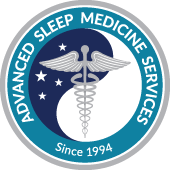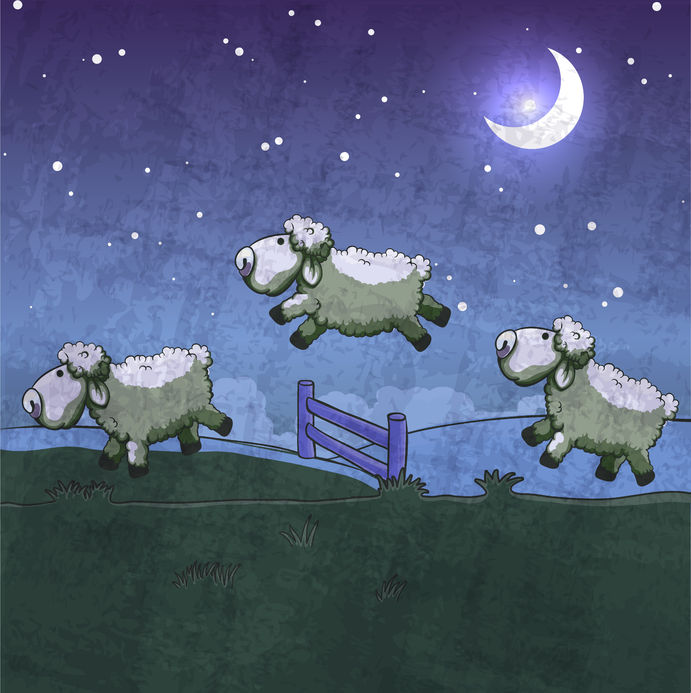1. The older you get, the fewer hours of sleep you need.
Sleep experts recommend a range of seven to nine hours of sleep for the average adult. While sleep patterns change as we age, the amount of sleep we need generally does not. Older people may wake more frequently through the night and may actually get less nighttime sleep, but their sleep need is no less than younger adults. Because they may sleep less during the night, older people tend to sleep more during the day. Naps planned as part of a regular daily routine can be useful in promoting wakefulness after the person awakens. Learn more about recommended sleep duration guidelines by age group here.
2. During sleep, your brain rests.
The body rests during sleep, however, the brain remains active, gets “recharged,” and still controls many body functions including breathing. When we sleep, we typically drift between two sleep states, REM (rapid eye movement) and non-REM, in 90-minute cycles. Non-REM sleep has four stages with distinct features, ranging from stage one drowsiness, when one can be easily awakened, to “deep sleep” stages three and four, when awakenings are more difficult and where the most positive and restorative effects of sleep occur. However, even in the deepest non-REM sleep, our minds can still process information. REM sleep is an active sleep where dreams occur, breathing and heart rate increase and become irregular, muscles relax and eyes move back and forth under the eyelids. Learn about sleep apnea’s effect on the brain here.
3. If you wake up in the middle of the night, it is best to lie in bed, count sheep, or toss and turn until you eventually fall back asleep.
Waking up in the middle of the night and not being able to go back to sleep is a symptom of insomnia. Relaxing imagery or thoughts may help to induce sleep more than counting sheep, which some research suggests may be more distracting than relaxing. Whichever technique is used, most experts agree that if you do not fall back asleep within 15-20 minutes, you should get out of bed, go to another room and engage in a relaxing activity such as listening to music or reading. Return to bed when you feel sleepy. Avoid watching the clock.
4. Daytime sleepiness always means a person isn’t getting enough sleep.
Excessive daytime sleepiness is a condition in which an individual feels very drowsy during the day and has an urge to fall asleep when he/she should be fully alert and awake. The condition, which can occur even after getting enough nighttime sleep, can be a sign of an underlying medical condition or sleep disorder such as narcolepsy or sleep apnea. These problems can often be treated, and symptoms should be discussed with a physician. Daytime sleepiness can be dangerous and puts a person at risk for drowsy driving, injury, and illness and can impair mental abilities, emotions, and performance. Learn more about sleep disorders like narcolepsy and sleep apnea here.
5. Sleep apnea is just snoring.
All too often, snoring and sleep apnea are confused or thought of as interchangeable. In truth, while all untreated OSA sufferers snore, only some people who snore have sleep apnea. According to the American Academy of Otolaryngology, 45 percent of the population snores occasionally and one in four adults snore chronically. At the same time, an estimated 18 million people across the country suffer from obstructive sleep apnea (OSA), which has been linked to a bevy of health issues including obesity, heart disease, diabetes, and high blood pressure. Learn more from our guest post by Clark O. Taylor, M.D., D.D.S.
6. Only older people get sleep apnea.
Doctors estimate that more than 18 million Americans have the condition. It’s more common after age 40, but it can affect people of all ages. You’re more likely to have sleep apnea if you are overweight, male, and have a thick neck circumference. The disorder also tends to run in families. Learn more about risk factors for sleep apnea here.
7. Women don’t get sleep apnea.
Sleep apnea is less prevalent in women than men, but still, women are seriously underdiagnosed. One study estimates that women make up 1/3 of people with sleep apnea, but only 1/9 of tested patients. Shockingly, over 90% of women with sleep apnea are undiagnosed.
8. Sleep apnea is rare in children.
2-3% of children have sleep apnea.
Sleep apnea occurs when throat tissue obstructs a person’s airway while they are asleep, blocking their breath, which leads to restless sleep and unhealthy strain on the body. Thus, one of the most obvious symptoms that your child has this condition is heavy snoring, gasping, snorting, choking, or uneven breathing during sleep. Frequent bed wetting or nightmares, strange posture while sleeping, and waking up with headaches or a dry throat could also betray troubled sleep.
There are several behavioral clues that could also indicate that your child’s sleep is not as sound as it could be. A child might seem excessively sleepy during the day. Other possible side effects could include behavioral problems like hyperactivity or learning difficulties. Thus, children who unknowingly suffer from sleep apnea are often misdiagnosed with ADHD. Learn more about testing and treating sleep apnea in children here.
9. Alcohol will help you sleep.
Alcohol not only relaxes you after a long week at the office, but it also relaxes the muscles in your throat making it more likely for the upper airway to collapse, causing snoring or obstructive sleep apnea (here’s another blog post about the difference between snoring and sleep apnea: Snoring vs. Sleep Apnea: Which is it?).
Most doctors will agree that one to two drinks will only cause a minimal effect (depending on other health factors, including your BMI), but any more than that can adversely affect your much-needed rest. If you have been relying on alcohol to try to sleep better, there could be an underlying condition that you may not even be aware of that is preventing you from a restful sleep. If you have a hard time falling or staying asleep or wake up in the morning after a long period of sleep and still feel tired, you may have a sleep disorder. Take the sleepiness quiz to assess your level of sleepiness and talk to your doctor about your symptoms.
If you have untreated sleep apnea, alcohol will make it worse and can even affect the results of a sleep study.
10. Adults who have had a tonsillectomy during childhood do not develop obstructive sleep apnea.
Even if you have had a tonsillectomy, you can still develop obstructive sleep apnea as an adult.
The most common cause of childhood OSA is having overly large tonsils and adenoids (a soft mass of tissue located just behind the uvula) that block off the airway during sleep. Tonsillectomy cures sleep apnea in 80-90% of children. Thirty years ago, about 90% of tonsillectomies in children were done for recurrent throat infection; now it is about 20% for infection and 80% for obstructive sleep apnea.
If you’re concerned that you or a loved one may have a sleep disorder, check out our educational resources and talk to your doctor today!
Other posts you may find interesting:



Comments
Judson
Posted on May 15, 2017Is it possible as an adult to get your tonsels removed or do you need proof that you have infections. I just wanted to see if it helped with my sleep apnea. I was diagnose two weeks ago and I’m having trouble still adapting to the air machine.